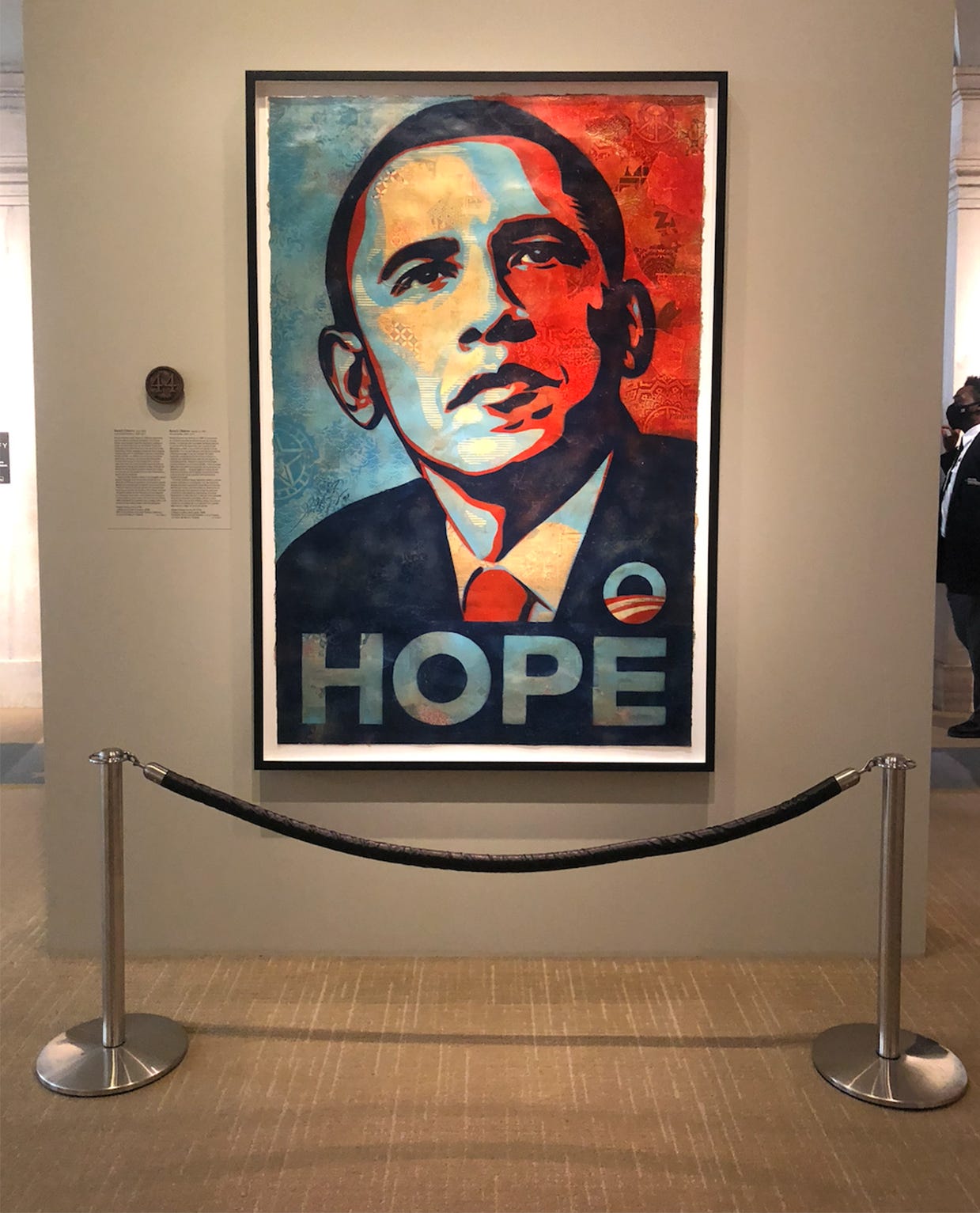What state tourism logos look like now vs. 10 years ago
Plus: New York City just got rid of its last payphone
Hello, in this issue we’ll look at…
What state tourism logos look like now vs. 10 years ago
One of Shepard Fairey’s original Obama “HOPE” collages just sold for $735,000
New York City just got rid of its last payphone
What state tourism logos look like now vs. 10 years ago

All 50 states have some version of a tourism department. They put out ads and visitor guides, and in some cases, their logos act as de facto logos for the state.
This week, a viral tweet rounding up state tourism logos went mega viral on Twitter. I found the graphic came from a 2012 Reddit post and most agencies have since changed their logos, so I went through state agency sites to source their current logos and arranged them in alphabetical order above.
Now check out how they’ve evolved since 10 years ago:
What do you think? Which states are the most improved? Which states had it and lost it?
Here are three thoughts I had:
When it works, it works: Logos that have been around longer accrue more familiarity, and some go on to become popular symbols, like New York’s “I ❤️ New York” logo (1976) by Milton Glaser. When these logos work, they work, and you don’t want to mess with them, including logos from Mississippi, South Dakota, and Utah. Virginia kept the concept but changed the fonts and moved the ❤️ for its well-known “Virginia is for Lovers” logo and campaign.
You can do folksy without being corny: A lot of states try to lean into their charm and folksiness, but that can get a little ~live, love, laugh~, if you know what I mean. New logos from Georgia and West Virginia show there’s a way to look welcoming and small town while still coming across as contemporary, though.
I don’t hate the sans serifs: I know it’s become a meme to joke about fashion brands all swapping out their serif logos for sans-serif ones. That was my first thought when I saw the sans-serif logos from Kansas, Kentucky, Montana, and New Mexico. They’re simple and strong, though, and I really like them.
One of Shepard Fairey’s original Obama “HOPE” collages just sold for $735,000
One of the original collages Shepard Fairey made of his “HOPE” portrait of then-Sen. Barack Obama (D-Ill.) in 2008 just sold at auction.
The work sold for $735,000, per Heritage Auction, well above their $300,000-$500,000 pre-auction estimate. Fairey made three original mixed-media stenciled collages, one of which is in the Smithsonian Institution's National Portrait Gallery and now on view while Kehinde Wiley’s 2018 portrait of Obama is on tour. The other is in a private collection, according to Heritage Auction.
Fairey, a street artist and founder of OBEY clothing, put the portrait out as a street art poster ahead of the 2008 Iowa caucus, which Obama won. More than 300,000 posters were distributed, and Fairey later designed versions for the 2009 Inauguration and TIME magazine. A copyright lawsuit between Fairey and the Associated Press over the image was settled in 2011.
“HOPE” “defined an entire movement and a presidency,” Heritage Auctions director of modern and contemporary art Taylor Curry said in a statement.
“I can't overstate how important the image is, and bidders responded accordingly,” Curry said.
When I interviewed Fairey in 2017, he told me he didn’t want to try to make another “HOPE.”
“I am not as interested in making portraits of people that maybe play into the idea of image and celebrity as the important thing when I actually think substance is,” he said.
New York City just got rid of its last payphone

It’s the end of an era: New York City removed its last remaining public payphone on Monday, near Seventh Ave. and 50th St. in Manhattan.
The payphone is heading to a museum and being replaced by a LinkNYC kiosk which offers free public wifi, phone calls, and device charging.
Analog City: NYC B.C. (Before Computers) opened last Friday at the Museum of the City of New York and runs through the end of the year. The exhibition shows how the New York Times, New York Stock Exchange, and New York Public Library operated before computers, and focuses on the time period between the 1870s and 1970s.
The payphone will join artifacts like a typewriter and rotary dial phone. You laugh, but one day your smartphone is going to be in a museum, mortal.
“Just like we transitioned from the horse and buggy to the automobile and from the automobile to the airplane, the digital evolution has progressed from payphones to high-speed wifi kiosks to meet the demands of our rapidly changing daily communications needs,” New York City chief technology officer Matthew Fraser said in a statement.

Artist KAWS, who vandalized New York payphones and billboards with his art in the 1990s, paid tribute to public payphones on Monday with throwback photos. RIP.







